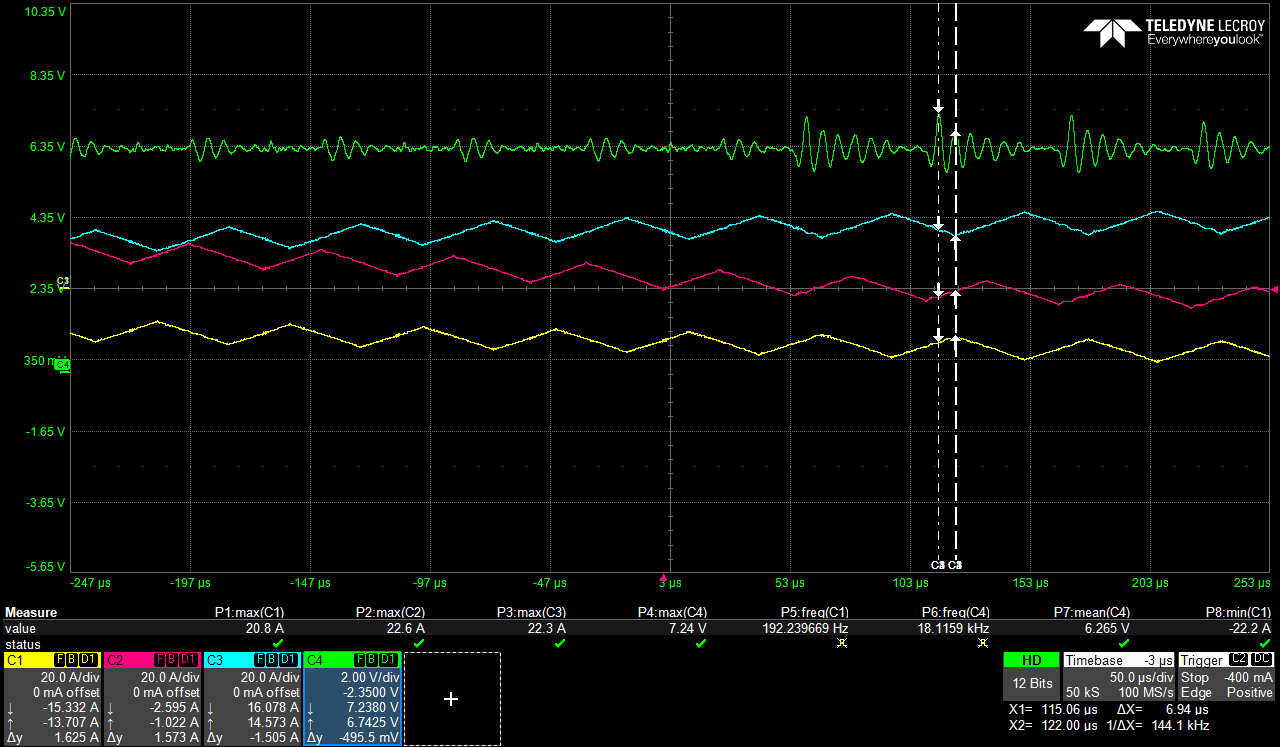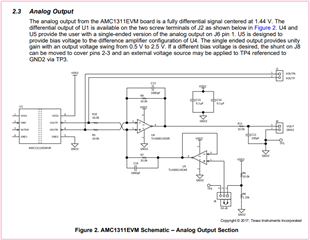Other Parts Discussed in Thread: AMC1200, AMC1200EVM, TLV9051, TLV6001, TLV9061
Hi,
We are using the AMC1300 as a voltage sensing circuit (grid voltage). The application is an inverter connected to the 3phase grid. It is based on two level topologies.
The schematic is the following:

The measurement is below in green:

We have an oscillation measured at 144 kHz. That seems to be triggered by the switching stage. When the switching is off, the measurement is fine.
Have you already encountered is a similar phenomenon ?
Do you have any suggestions to remove those oscillations ?
Thank you for your help
Best regards,


